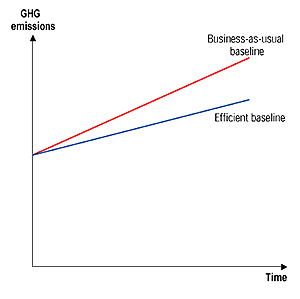
Figure 7.2: Greenhouse gas emission profiles of different baseline case approaches.
 Figure 7.2: Greenhouse gas emission profiles of different baseline case approaches. |
The literature reports several different baseline scenario concepts, including (Sanstad and Howart, 1994; Halsnæs et al., 1998; Sathaye and Ravindranath, 1998):
These different baseline scenario concepts represent different expectations about future GHG emission development trends, as well as different perspectives on the trade-offs between climate change mitigation policies and other policies. The costs of a given GHG emissions reduction policy depend in a very complicated way on numerous assumptions about future GHG emissions, the potential for emissions reductions, technological developments and penetration, resource costs, and markets.
The different GHG emission profiles of the alternative baseline-scenario approaches depend on a number of assumptions. These include economic growth, mix of products, GHG emissions, intensity of energy production and consumption, and other material use. A “business-as-usual” baseline case is often associated with high GHG emissions, particularly if current main GHG emission sources, such as the energy industry, run at low efficiency. Such a baseline case can reflect the continuation of current energy-subsidy policies (which implies relatively high energy consumption and thereby high GHG emissions) or various other market failures of particular importance for GHG emission intensive sectors, such as capital market constraints. An efficient baseline case that assumes properly functioning markets, all other things being equal, can be expected to reflect relatively high energy efficiency and thereby lower GHG emissions than a business-as-usual baseline case. GHG emission profiles of the different baseline case approaches are illustrated in Figure 7.2.
The GHG emission reduction potential of a given policy is to be measured as the difference between the GHG emissions in the baseline case and the GHG emissions after the implementation of the policy. Clearly, this difference depends on both the baseline and the options chosen for the mitigation. High baseline-scenario GHG emissions based on a business-as-usual scenario approach in some cases can imply that the net mitigation costs measured per unit of GHG emission reduction are relatively low. Such a result, for example, can reflect that the mitigation scenario is assumed to imply a general efficiency improvement of the energy systems compared with the baseline wich both reduces GHG emission and generates fuel cost savings. The total costs of achieving a given GHG emission level (e.g., defined in relation to 1990 emissions), however, can be relatively high when the mitigation strategy is assessed in relation to a business-as-usual baseline scenario that has a large growth in GHG emissions. Conversely, GHG emission reduction costs per unit of emission can be relatively high in relation to an efficient baseline case, but total reduction costs of meeting a target can be low.
It is important to emphasize consistency and transparency in the definition of baselines, and in the reporting of any costs associated in moving from a given baseline case to a climate change policy case. Furthermore, when reporting the range of cost estimates for the different baselines, it is important also to provide information about the assumptions that underlie each baseline.
|
Other reports in this collection |